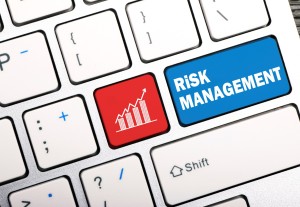
A risk management plan can help protect your company from malware and other cyber security disasters.
Determining the nature and extent of cyber security risks is a critical challenge companies face. Working within budgetary constraints, companies need to draw up and implement a comprehensive plan for cyber security that encompasses all business operations and keeps various risks at an acceptable level.
When so much of what a company does depends on computing devices, there are numerous points of vulnerability that cyber criminals can exploit. Companies need to understand the kinds of risks they face, the likelihood of different IT disasters, and the best ways to manage each type of risk.
A recent article from Business Insurance discusses how good risk management provides companies with important insights about cyber security risks and recommendations for steps to take. Knowing how to manage your cyber security risks is integral to better protecting your company from malware and other cyber crimes and IT disasters.
How should you go about managing your company’s cyber security risks? The following are several key tips.
1) Rely on meaningful data
As much as possible, you should quantify the risks your company faces and the likely effects of your solutions. Quantifying risks helps you prioritize the vulnerabilities that need the most attention and resources. You can also determine whether or not a particular solution has worked as you anticipated, and whether your solutions are cost-effective. Without supporting data, you’re less likely to have a clear picture of your company’s cyber security performance.
2) Choose your metrics carefully
How do you intend to measure different kinds of risk? What’s an acceptable level of risk to work with? Unfortunately, there aren’t always industry standards or other widely agreed-upon best practices to help you determine the answers. To start with, you can consult with IT security professionals and well-informed business leaders to get a better sense of how to best measure and manage risk.
3) Make sure you’re comprehensive
Risk management should encompass all aspects of your company and its operations. Every business operation exposes you to cyber security risks. HR personnel work with software and files containing employees’ payroll data. Employees in sales and marketing handle sensitive customer information. Your accounting personnel process critical financial information. Understand the vulnerabilities in every type of hardware and software you use and in the IT set-up your business relies on.
4) Stay realistic
There’s no way you can avoid all risks or bring the chances of an IT disaster down to nothing. Sometimes, you’ll have to accept a risk, because the benefits are greater. You may not always have the means to significantly reduce a particular risk. Other times, you’ll need to do everything you can to bring the level of risk down as much possible, because failing to do so will severely undermine your company. A strong risk management approach helps you make the best possible decisions within the constraints affecting you.
5) Make it a group effort
Risk management is based on collaboration among IT personnel and company leaders. This collaboration ensures that your company’s decision makers are all on the same page when it comes to prioritizing cyber security, understanding the risks, and keeping the risks at acceptable, manageable levels. Ultimately, every IT security decision you make needs to serve your company’s goals and further its growth. Your IT personnel can’t work in isolation, without an understanding of your company’s needs and objectives.
To protect your company, you need to manage risks effectively. You can’t rely on one-size-fits-all cyber security solutions. You also can’t protect your business if your IT security decisions lack coherence and direction and remain disconnected from your company’s goals. Don’t hesitate to contact us for further advice and assistance. We can help you assess your risks and come up with solutions for managing them in a way that best protects your company from IT disasters.